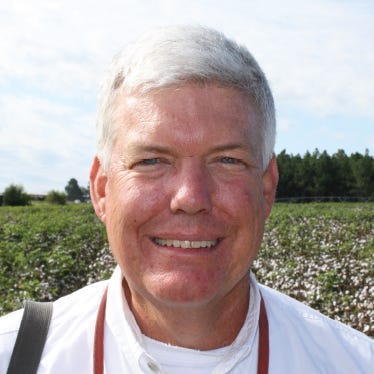
At a Glance
- Rot of debris and impact on nematodes are good things for farmers.
- Farmers in the Southeast would benefit from prolonged periods of freezing temperatures.
Following three consecutive La Niña winters, winters which were generally warmer and drier than average, the approaching winter of 2023-2024 will be an El Niño. Why should you care?
With harvest closing and months to go before planting our 2024 row crops, climate between now and March may seem irrelevant. But pay attention. The conditions between now and our next planting season could impact future disease and nematode considerations.
As many of you know, my bride is from the Philippines. She loves La Niña winters. Being from a tropical country, which is balmy year-round, warmer and drier is much preferred over colder and wetter. Warmer and drier may help with her garden and our electric bills, but it doesn’t help farmers.
Drier winters slow the rot of crop debris, debris which is home to fungal pathogens between seasons. Warmer may mean nematodes stay active longer into the winter, and this easily results in a larger, more robust Team Nematode waiting to trounce the newly emerging teams for corn, cotton, peanut, and soybean.
Wetter weather
Warmer winters may also facilitate better growth of volunteer peanuts, corn, and cotton that survive in a field between seasons. Volunteers are a green bridge carrying bad guys, fungal pathogens and nematodes, from one cropping season into the next.
EL Niño translates as the boy child in Spanish but is more fully understood as The Christ Child because of its association by fisherman along the coast of Peru with December and the Christmas season. El Niño events coincide with unusually warm surface temperatures in the equatorial region of the eastern Pacific Ocean and often manifest in the Southeast with increased rainfall and cooler temperatures during winter months.
Wetter weather helps to fill irrigation ponds but also facilitates rot of debris. Such rot deprives pathogens of a food source between cropping seasons. Cooler weather lowers soil temperatures. Cooler soils can suppress feeding and reproduction of parasitic nematodes. Rot of debris and impact on nematodes are good things for farmers.
With regards to cooler winter temperatures, Pam Knox, director of the UGA Weather Network and agricultural climatologist, noted the following.
“One thing to keep in mind in an El Niño winter is that it is cooler because all the clouds and rain keep the daytime temperatures cooler. That does not mean there will be more freezing weather necessarily, because clouds keep nighttime temperatures higher. So do the wetter soils. The wild card this year (2023-2024 winter) is the trend towards warmer temperatures from global warming. Winter is warming twice as fast as the other seasons and we don’t know whether the El Niño or global warming is going to have the most influence on temperatures in the coming months. I am afraid that we could get less relief from the El Niño for management of volunteer crops, pests, and nematodes than we would hope. So it is especially important for growers to keep on top of management for all of these things because there is no guarantee they will be saved by the weather.”
Benefits
The take-home message now for growers is that our 2023-2024 winter will be different than the previous three winters. Based upon climate predictions, we should have more rainfall, which is beneficial for growers, and also cooler temperatures, which could be beneficial as well.
Farmers in the Southeast would benefit from prolonged periods of freezing temperatures, which would not only kill plants surviving from last season, especially cotton, but would also send nematodes into a deep and prolonged winter slumber.
Pam points out that we will be under El Niño conditions, this is not a guarantee for more freezes. Now is the time to understand how weather and climate this winter will impact farming next spring. Now is the time to prepare for what El Niño may bring with it. Preparation could make a difference in your crops next year.
About the Author(s)
You May Also Like






